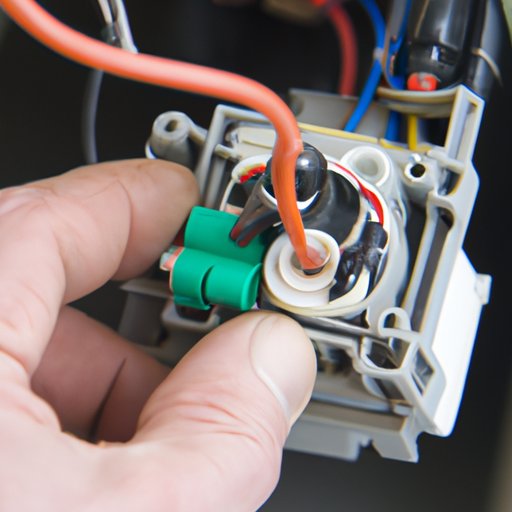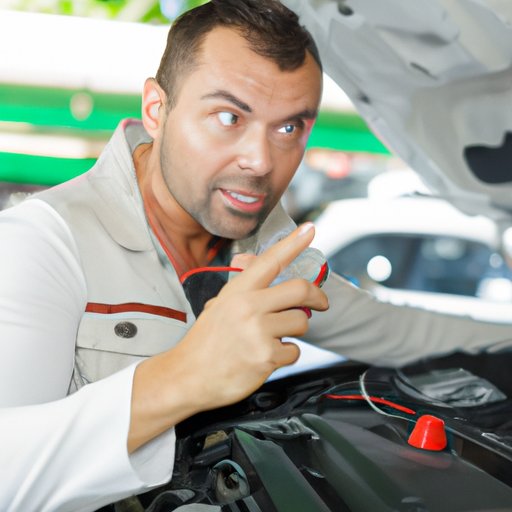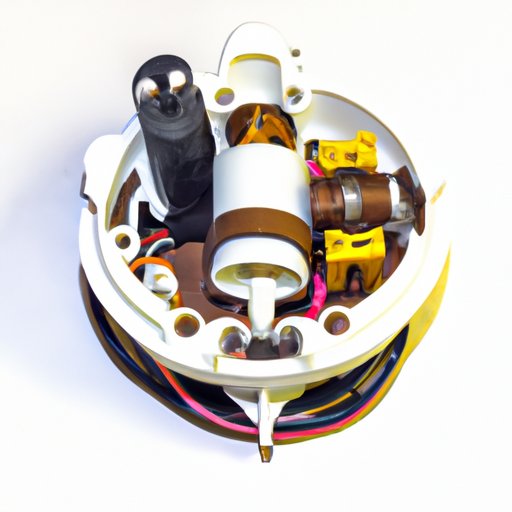Introduction
When it comes to maintaining a car or any other vehicle, it is important to know when parts need to be replaced or repaired. One of the most essential components of a vehicle is the starter solenoid, which helps in starting the engine. It is important to understand how to tell if the starter solenoid is bad so that it can be replaced or repaired before it causes further damage to the vehicle.
A starter solenoid is an electromagnetic switch that is used to turn on the starter motor of a vehicle. It uses electrical power from the battery to activate the starter motor, which then turns the flywheel to start the engine. The solenoid works by creating a magnetic field when current is applied to the solenoid coil. This magnetic field then attracts the plunger connected to the starter motor, which closes the circuit and activates the starter motor.
There are several reasons why the starter solenoid may be bad, such as corrosion, wiring problems, or a faulty solenoid. If the starter solenoid is not functioning properly, it can cause the vehicle to not start, or it can cause other problems such as slow cranking or excessive wear on the starter motor.
Testing the Voltage Output of the Starter Solenoid
The first step in determining if the starter solenoid is bad is to test the voltage output of the solenoid. This can be done using a multimeter or a voltmeter.
The necessary equipment for this test includes a multimeter or voltmeter, a 12-volt test light, and two jumper cables. First, connect the positive (+) lead of the multimeter or voltmeter to the positive terminal of the battery. Then, connect the negative (-) lead to the small terminal on the starter solenoid. Finally, connect the 12-volt test light between the negative (-) terminal of the battery and the large terminal on the starter solenoid.
Once the equipment is set up, turn on the multimeter or voltmeter and measure the voltage at the small terminal on the starter solenoid. The reading should be between 9 and 12 volts. If the reading is below 9 volts, the starter solenoid is likely bad and needs to be replaced.
Inspecting the Wiring Connections for Corrosion or Damage
The next step in diagnosing a bad starter solenoid is to inspect the wiring connections for corrosion or damage. Corrosion or damage to the wiring can prevent the starter solenoid from receiving the required electrical power to operate correctly, resulting in the vehicle not starting.
The necessary equipment for this inspection includes a wire brush, some rubbing alcohol, and a pair of pliers. First, disconnect the negative (-) lead from the battery to prevent accidental short circuits. Then, use the wire brush to clean the terminals of the starter solenoid and the battery posts. Once the terminals have been cleaned, use the rubbing alcohol to clean off any remaining dirt or debris. Finally, use the pliers to check the wiring for any signs of corrosion or damage.
If there are any signs of corrosion or damage to the wiring, it is likely that the starter solenoid is bad and needs to be replaced.

Checking the Contacts on the Starter Solenoid
The next step in diagnosing a bad starter solenoid is to check the contacts on the starter solenoid. Over time, the contacts can become worn out or corroded, preventing the starter solenoid from receiving the required electrical power to operate correctly, resulting in the vehicle not starting.
The necessary equipment for this inspection includes a pair of needle nose pliers and a flashlight. First, disconnect the negative (-) lead from the battery to prevent accidental short circuits. Then, use the needle nose pliers to remove the contacts from the starter solenoid. Once the contacts have been removed, inspect them with a flashlight for any signs of wear or corrosion. If the contacts are worn or corroded, they need to be replaced.

Listening for a Clicking Sound When Engaging the Starter
The next step in diagnosing a bad starter solenoid is to listen for a clicking sound when engaging the starter. If the starter solenoid is bad, it will often produce a clicking sound when the starter is engaged. This is caused by the solenoid attempting to engage the starter motor, but failing due to the bad solenoid.
The necessary equipment for this test is simply your ears. Begin by turning the key in the ignition to the “on” position. Then, press down on the accelerator pedal and listen for a clicking sound coming from the starter solenoid. If you do hear a clicking sound, it is likely that the starter solenoid is bad and needs to be replaced.

Testing the Continuity of the Starter Solenoid Circuit
The last step in diagnosing a bad starter solenoid is to test the continuity of the starter solenoid circuit. This can be done using a multimeter or a continuity tester.
The necessary equipment for this test includes a multimeter or continuity tester, a 12-volt test light, and two jumper cables. First, connect the positive (+) lead of the multimeter or continuity tester to the positive terminal of the battery. Then, connect the negative (-) lead to the small terminal on the starter solenoid. Finally, connect the 12-volt test light between the negative (-) terminal of the battery and the large terminal on the starter solenoid.
Once the equipment is set up, turn on the multimeter or continuity tester and measure the resistance between the small terminal on the starter solenoid and the large terminal. The reading should be zero ohms. If the reading is not zero ohms, the starter solenoid is likely bad and needs to be replaced.
Conclusion
In conclusion, understanding how to tell if the starter solenoid is bad is an important part of vehicle maintenance. By testing the voltage output, inspecting the wiring connections, checking the contacts, listening for a clicking sound, and testing the continuity of the starter solenoid circuit, you can determine if the starter solenoid is bad and needs to be replaced.
(Note: Is this article not meeting your expectations? Do you have knowledge or insights to share? Unlock new opportunities and expand your reach by joining our authors team. Click Registration to join us and share your expertise with our readers.)
